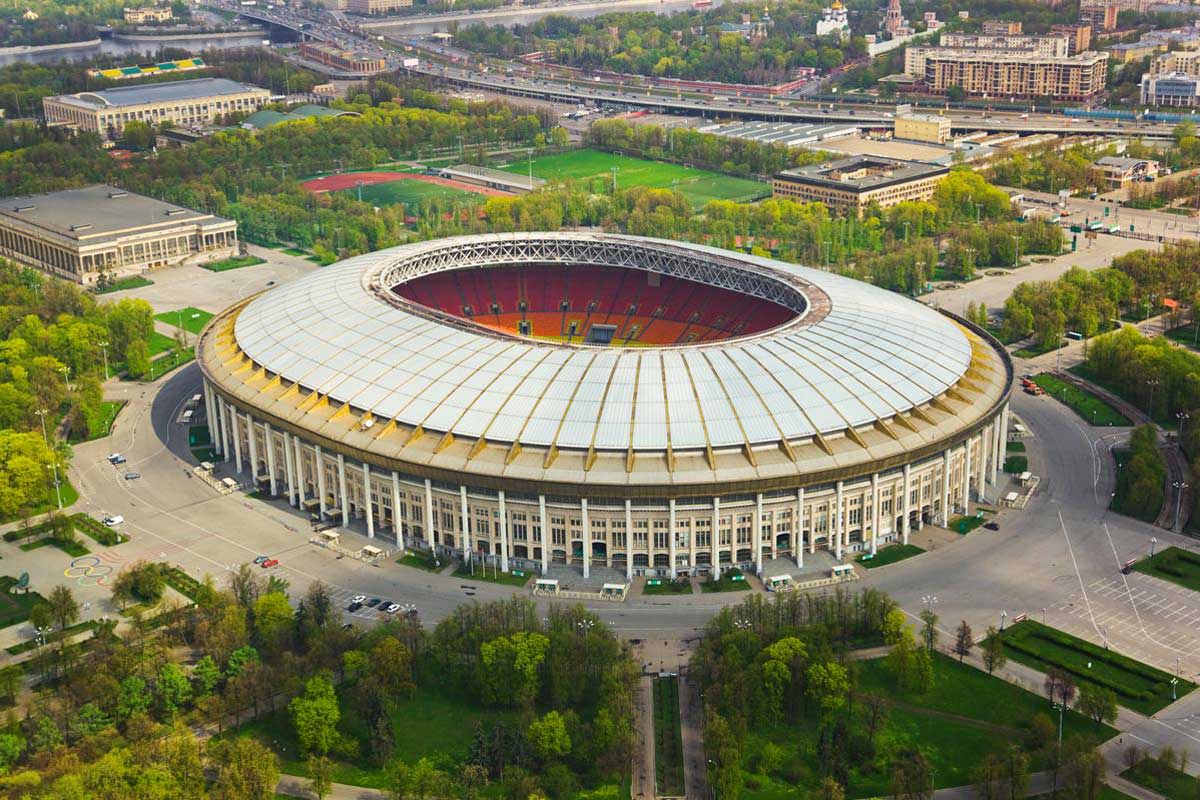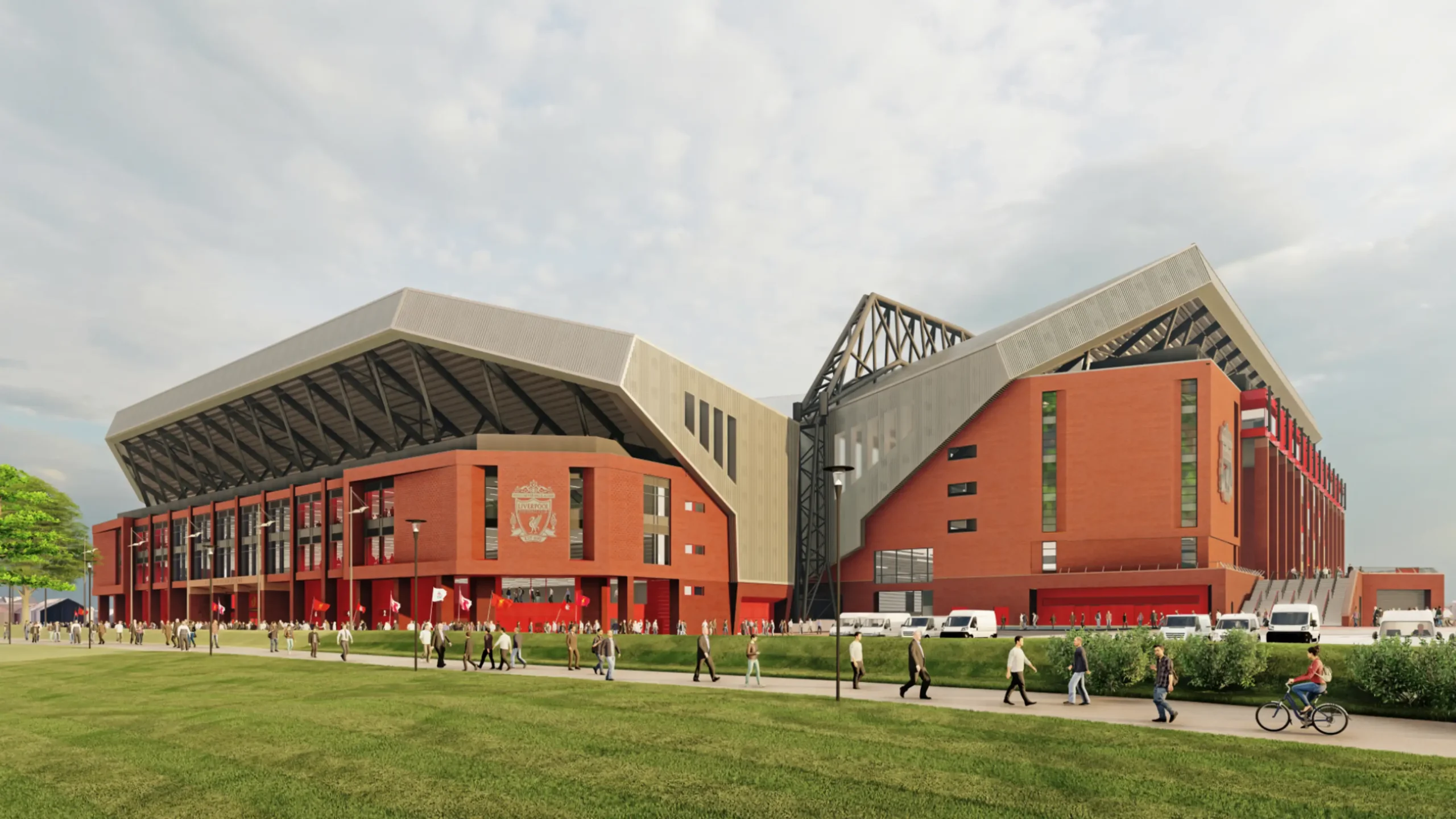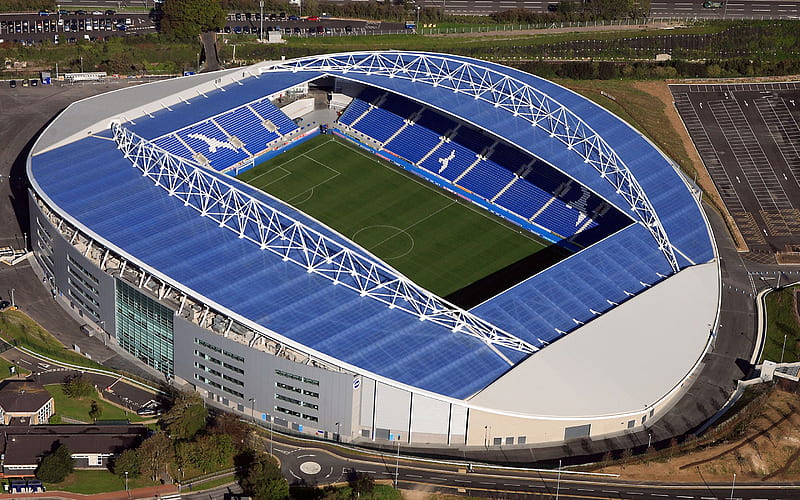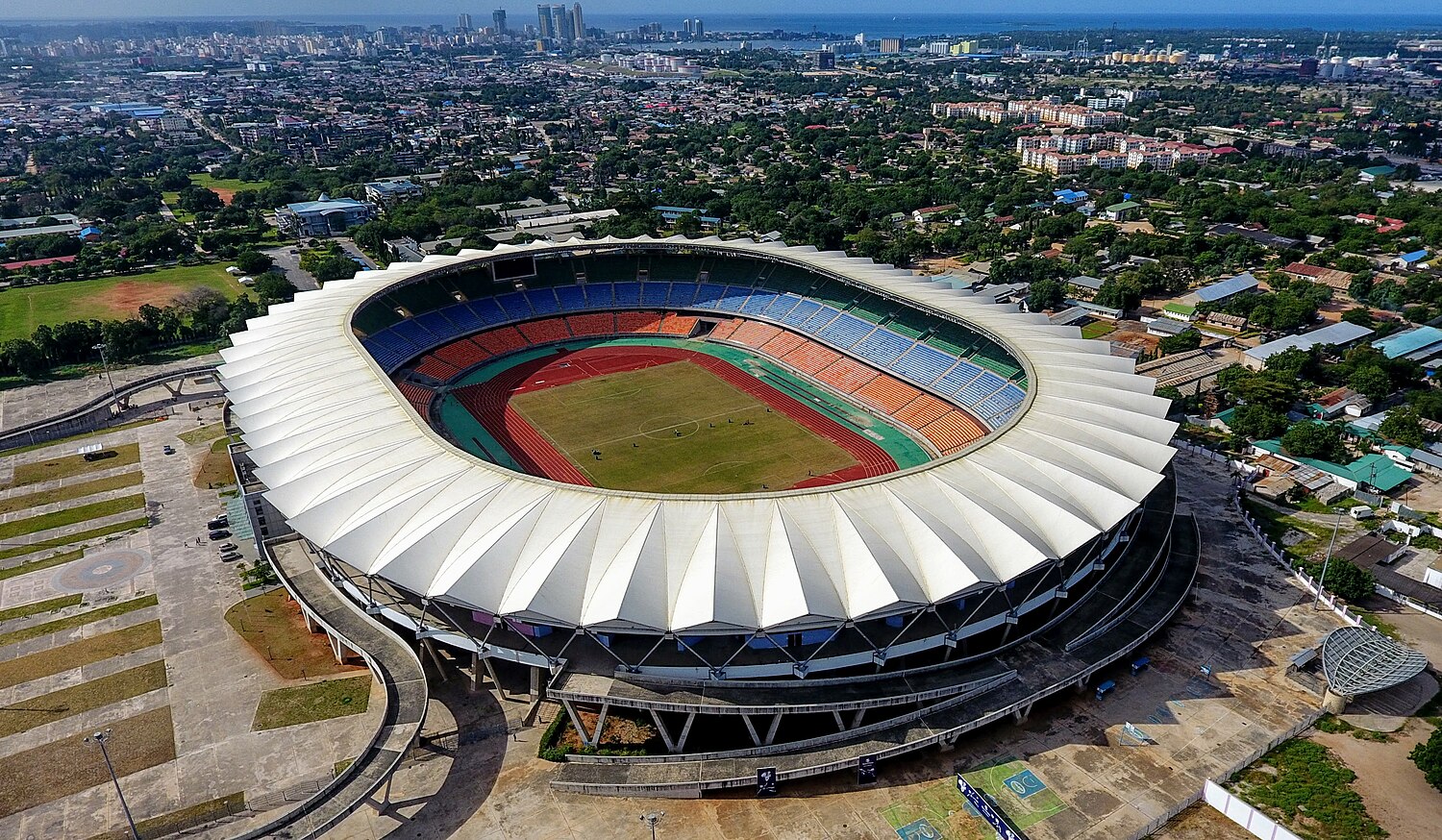Luzhniki Stadium is a world-renowned sporting venue situated in Moscow, Russia. The stadium is a symbol of the country’s sporting heritage, hosting a range of major international events over the years. The stadium has undergone significant renovations and upgrades since its opening in 1956, making it one of the most modern and technologically advanced facilities in the world.
Luzhniki Stadium is a monument to the sporting triumphs and tragedies of Russia’s history. The stadium has played host to some of the most iconic moments in sporting history, including the 1980 Summer Olympics, the 2018 FIFA World Cup, and the 2008 UEFA Champions League Final. With a seating capacity of 81,000, Luzhniki Stadium is the largest football stadium in Russia and the ninth-largest stadium in Europe. It is an architectural masterpiece that combines modern design with Soviet-era grandeur.
Key Takeaways
- Luzhniki Stadium is a world-renowned sporting venue situated in Moscow, Russia, and is a symbol of the country’s sporting heritage.
- The stadium has undergone significant renovations and upgrades since its opening in 1956, making it one of the most modern and technologically advanced facilities in the world.
- Luzhniki Stadium has played host to some of the most iconic moments in sporting history, including the 1980 Summer Olympics, the 2018 FIFA World Cup, and the 2008 UEFA Champions League Final.
Historical Overview of Luzhniki Stadium
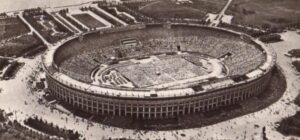
Luzhniki Stadium, located in the Khamovniki District of Moscow, is the national stadium of Russia and the largest football stadium in the country. The stadium was built in 1956 and was initially called the Central Lenin Stadium. It was constructed as part of the Luzhniki Olympic Complex, which was built to upgrade the country’s sports facilities after the Soviet Union had tasted its first post-war successes at the 1952 Olympics. The stadium was built in a record time of 450 days.
The stadium has a seating capacity of 81,000, making it the ninth-largest stadium in Europe. It has hosted numerous international sporting events, including the 1980 Summer Olympics, the 2013 World Athletics Championship, and the 2018 FIFA World Cup. The stadium has also hosted several concerts, including performances by The Rolling Stones, Michael Jackson, and Viktor Tsoi.
Over the years, Luzhniki Stadium has undergone several renovations and upgrades to modernize its facilities. In 2013, the stadium underwent a major renovation in preparation for the World Athletics Championship. The renovation included the installation of a new roof, new seating, and improved facilities for athletes and spectators.
Today, Luzhniki Stadium remains an important landmark in Moscow and a monument to the country’s sporting heritage and historic triumphs. The stadium continues to host major international sporting events and is a popular destination for tourists visiting Moscow.
Architectural Design and Renovations
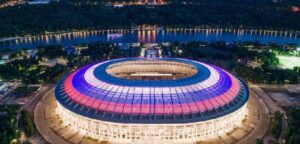
Luzhniki Stadium is a remarkable feat of engineering, architecture, and design that has undergone several renovations over the years to keep up with changing times and evolving technologies.
Initial Construction
The stadium was initially constructed in the 1950s under the supervision of architect Aleksandr Vlasov. The stadium opened on July 31, 1956, with a sports holiday that included gymnasts, acrobats, and track-and-field athletes. On the same day, the RSFSR and PRC teams played a friendly on the field of the Big Sports Arena. The Russian team won 1-0. The stadium was built in a record time of 450 days.
The stadium was designed to accommodate 103,000 spectators, making it the largest stadium in the world at the time. The stadium’s design was inspired by the ancient Roman amphitheaters and featured a circular shape with a diameter of 320 meters. The stadium’s stands were arranged in three tiers, with the lowest tier being partially underground. The stadium’s roof was supported by a ring of 60 concrete pillars, which also served as the stadium’s lighting system.
Renovations for the 1980 Olympics
In 1980, Luzhniki Stadium underwent extensive renovations to host the Summer Olympics. The stadium’s capacity was reduced to 78,000 seats, and the stadium’s roof was replaced with a new one made of aluminum and glass. The stadium’s lighting system was also upgraded, and a new scoreboard was installed.
21st Century Modernization
In preparation for the 2018 FIFA World Cup, Luzhniki Stadium underwent another round of renovations. The stadium’s capacity was reduced to 81,000 seats, and the stadium’s roof was replaced with a new one made of a translucent polycarbonate material. The new roof allows natural light to enter the stadium, reducing the need for artificial lighting. The stadium’s seating and facilities were also upgraded to meet modern standards, and a new media center was built to accommodate journalists from around the world.
Overall, Luzhniki Stadium’s architectural design and renovations have made it a symbol of Russia’s sporting heritage and historic triumphs. The stadium’s circular shape, iconic lighting system, and unique roofing make it a one-of-a-kind venue that has hosted some of the world’s most significant sporting events.
Major Sporting Events Hosted
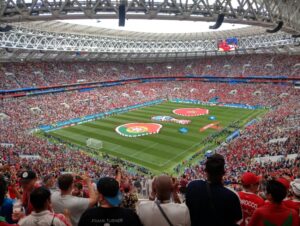
Luzhniki Stadium in Moscow, Russia has been the venue for some of the most significant sporting events in history. The stadium has hosted numerous international competitions, including the Summer Olympics, World Cup, and Champions League Finals. Here are some of the most notable events held at the stadium:
1980 Summer Olympics
Luzhniki Stadium was the main venue for the 1980 Summer Olympics, which was held in Moscow, Russia. The stadium hosted the opening and closing ceremonies, as well as the athletics events. The 1980 Olympics was one of the most significant events in the history of Luzhniki Stadium, as it showcased the stadium’s capacity to host a large-scale international event.
2018 FIFA World Cup
Luzhniki Stadium was also one of the main venues for the 2018 FIFA World Cup, which was hosted by Russia. The stadium hosted the opening match, as well as the final match between France and Croatia. The stadium underwent significant renovations in preparation for the World Cup, including the installation of a new roof, seating, and a state-of-the-art video screen.
UEFA Champions League Finals
Luzhniki Stadium has also hosted two UEFA Champions League Finals, in 1999 and 2008. The 1999 final was won by Manchester United, who beat Bayern Munich 2-1 in a dramatic last-minute comeback. The 2008 final was won by Manchester United again, who beat Chelsea 6-5 on penalties after a 1-1 draw in regular time.
Overall, Luzhniki Stadium has a long and storied history of hosting major sporting events. From the Olympics to the World Cup to the Champions League, the stadium has been the site of some of the most significant moments in sports history.
Cultural Significance and Events

Luzhniki Stadium has been a cultural icon in Moscow since its completion in 1956. The stadium has hosted numerous events that have shaped the city’s cultural heritage and history.
Concerts and Festivals
The stadium has been a popular venue for international music events and festivals. Some of the most notable concerts held at Luzhniki include performances by Michael Jackson, The Rolling Stones, and Viktor Tsoi. The stadium has also hosted the World Festival of Youth and Students, which is a global youth event that brings together young people from different countries to promote international solidarity and friendship.
Political Rallies and Public Speeches
Luzhniki has been a popular venue for political rallies and public speeches. The stadium has hosted rallies and speeches by political leaders such as Vladimir Putin and Dmitry Medvedev. It has also been used as a venue for the annual Victory Day Parade, which is a military parade held on May 9th to commemorate the victory of the Soviet Union over Nazi Germany in World War II.
Overall, Luzhniki Stadium has played a significant role in shaping Moscow’s cultural heritage and history. Its iconic status as a venue for major events and festivals has made it a symbol of the city’s sporting and cultural achievements.
Economic Impact on Moscow
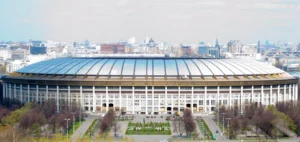
Luzhniki Stadium is not only a monument to Russia’s sporting heritage, but it is also a significant contributor to Moscow’s economy. The stadium has hosted numerous high-profile events, including the 1980 Summer Olympics, the 1999 UEFA Champions League Final, and most recently, the 2018 FIFA World Cup. These events have brought in millions of tourists and generated significant revenue for the city.
According to a report by PwC, the 2018 FIFA World Cup generated approximately $14 billion in economic activity for Russia, with Moscow being the biggest beneficiary. The report estimated that the tournament generated $3.5 billion for Moscow alone, with the majority of the revenue coming from tourism and hospitality.
In addition to hosting international events, Luzhniki Stadium is also home to two of Moscow’s most popular football clubs, Spartak Moscow and CSKA Moscow. The stadium’s regular football matches attract thousands of fans, which in turn boosts the local economy. Local businesses, such as restaurants, hotels, and souvenir shops, benefit from the increased foot traffic on match days.
Overall, Luzhniki Stadium’s economic impact on Moscow cannot be overstated. The stadium has played a significant role in promoting tourism and generating revenue for the city. Its contribution to the local economy is a testament to the importance of sports and entertainment in driving economic growth.
Stadium Accessibility and Facilities
Transport Links
Luzhniki Stadium is conveniently located on the Luzhniki Sports Complex, approximately 6 kilometers southwest of Moscow’s city center. The nearest metro station is Sportivnaya, which can be reached via the red metro line 1. Visitors can effortlessly reach the venue by public transportation, making it a convenient hub for various events.
Seating Capacity and Comfort
The revamped stadium lost its athletics tracks and its capacity expanded to hold 81,000 people. The stadium provides ample seating capacity, ensuring that visitors can comfortably enjoy the events. The seats are well-spaced, and the view of the pitch is excellent from any seat.
On-site Amenities
The stadium boasts a variety of on-site amenities to enhance the visitor experience. The stadium has several food and beverage outlets that offer a range of options, from fast food to fine dining. Additionally, the stadium has a souvenir shop that sells a wide range of merchandise, including t-shirts, hats, and other memorabilia. The stadium also has ample restrooms, ensuring that visitors do not have to wait in long lines to use the facilities.
In conclusion, Luzhniki Stadium offers excellent accessibility and facilities to ensure that visitors have a comfortable and enjoyable experience. With its convenient location, ample seating capacity, and on-site amenities, Luzhniki Stadium is an excellent venue for various events.
Environmental Considerations
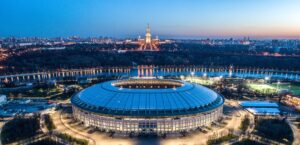
Luzhniki Stadium has been modernized and renovated to meet the environmental standards for sporting events. The stadium underwent a massive renovation in time for the 2018 FIFA World Cup, which saw the installation of new and more energy-efficient lighting systems, water-saving fixtures, and a state-of-the-art heating and cooling system.
According to Climate Action, the Luzhniki Stadium has passed the BREEAM international certificate awarded to sustainable buildings. The stadium has also implemented a waste management system to reduce waste and increase recycling.
The stadium’s location is easily accessible by public transportation, which reduces carbon emissions from private vehicles. The Luzhniki Stadium is located at the junction of two metro lines, and a 10-minute walk from either the Luzhniki or Sportivnaya metro stations will take you down a tree and fountain-lined alley straight to the stadium, making it easy for fans to access the stadium in an eco-friendly way.
The Luzhniki Stadium also has a green roof that helps reduce the heat island effect and provides insulation to the building. The green roof is a living system that is home to various species of plants and insects, which helps promote biodiversity in the area.
Overall, the Luzhniki Stadium has taken significant steps to reduce its environmental impact and promote sustainability in sporting events. The stadium’s efforts to become more environmentally friendly have set an example for other sporting venues around the world to follow.
Future Developments and Plans
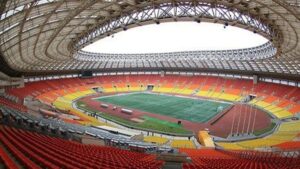
Luzhniki Stadium has undergone extensive renovations in recent years, and there are still plans for further development. One of the most exciting developments is the construction of a new sports and entertainment complex adjacent to the stadium. This complex is set to include a hotel, a shopping center, restaurants, and a cinema, as well as facilities for ice skating, curling, and hockey.
In addition to the new complex, there are also plans to further modernize the existing facilities at Luzhniki Stadium. One of the main goals of these renovations is to improve the fan experience, with new seating arrangements and improved sightlines. There are also plans to install a new sound system and upgrade the stadium’s lighting, to enhance the atmosphere during events.
Another major development is the construction of a new football academy on the site of the former Tushino airfield, which is set to be completed in 2022. This academy will be a state-of-the-art facility, with multiple pitches, a gym, and accommodation for young players. The academy will be used to develop the next generation of Russian football stars, and will be a key part of the country’s strategy to improve its performance on the international stage.
Overall, the future looks bright for Luzhniki Stadium and its surrounding area. With new developments and modernizations planned, the stadium is set to remain a key part of Moscow’s sporting heritage for many years to come.
Frequently Asked Questions
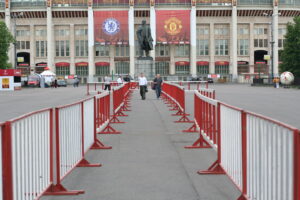
What major international sporting events has Luzhniki Stadium hosted?
Luzhniki Stadium has hosted numerous major international sporting events, including the 1980 Summer Olympics, the 1999 UEFA Champions League Final, and the 2008 UEFA Champions League Final. In addition, the stadium was a venue for the 2018 FIFA World Cup, hosting the opening match, the final, and several other matches throughout the tournament.
How does Luzhniki Stadium rank among European stadiums in terms of seating capacity?
With a seating capacity of 81,000, Luzhniki Stadium is the largest football stadium in Russia and the ninth-largest stadium in Europe. Its size and modern amenities make it an ideal venue for large-scale sporting events.
What renovations have been made to Luzhniki Stadium to maintain its UEFA Category 4 status?
In preparation for the 2018 FIFA World Cup, Luzhniki Stadium underwent a major renovation that included the installation of a new roof, new seating, and the removal of the athletics track. These renovations helped to maintain the stadium’s UEFA Category 4 status, which is required for hosting major international football matches.
Can you detail the historical significance of Luzhniki Stadium in the context of the Moscow Olympiad?
Luzhniki Stadium played a crucial role in the Moscow Olympiad, serving as the main venue for the Games. The stadium hosted the opening and closing ceremonies, as well as several key sporting events, including athletics, football, and gymnastics. The Moscow Olympiad was a significant moment in the history of the Soviet Union, and Luzhniki Stadium remains an important symbol of that era.
What are some of the notable features that make Luzhniki Stadium a monument to sporting heritage?
Luzhniki Stadium is a stunning example of Stalinist architecture, with a grand façade that features statues of athletes and a towering statue of Vladimir Lenin. The stadium’s interior is equally impressive, with modern amenities and state-of-the-art facilities that make it an ideal venue for large-scale sporting events. In addition, the stadium’s location in the heart of Moscow makes it an important cultural landmark and a symbol of the city’s sporting heritage.
How has Luzhniki Stadium been integrated into the legacy of the Russia World Cup?
The 2018 FIFA World Cup was a major moment for Luzhniki Stadium, which hosted the opening match, the final, and several other matches throughout the tournament. The stadium’s modern amenities and state-of-the-art facilities made it an ideal venue for the tournament, and its impressive size and grandeur helped to create a memorable experience for fans and players alike. Today, Luzhniki Stadium remains an important part of the legacy of the Russia World Cup, serving as a symbol of the country’s sporting heritage and its ability to host large-scale international events.
Other Stadiums Articles:
Check Out: Borussia Dortmund’s Fortress: A Chronicle of Passion and Triumph at Signal Iduna Park
Check Out: Santiago Bernabéu: The Citadel of Galácticos – Real Madrid’s Eternal Home of Football Brilliance
Check Out: Wembley Stadium: Echoes of Glory – A Timeless Icon in London’s Sporting Tapestry
Also Check: Camp Nou: Beholding Barcelona’s Sporting Legacy at a Cathedral of Football Majesty
Also Check: Anfield: Home of Liverpool’s Glorious Legacy – Where Red Dreams Soar
